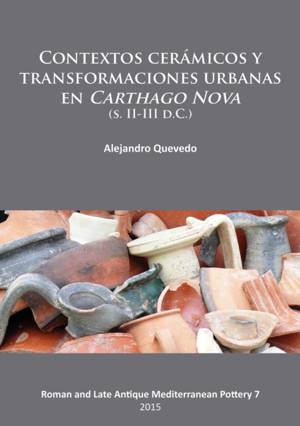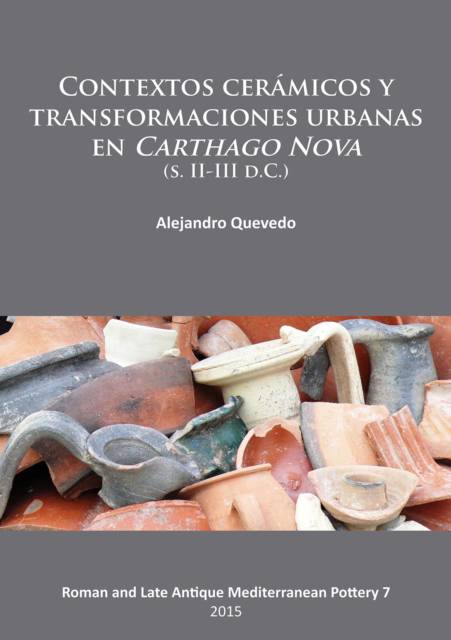
Door een staking bij bpost kan je online bestelling op dit moment iets langer onderweg zijn dan voorzien. Dringend iets nodig? Onze winkels ontvangen jou met open armen!
- Afhalen na 1 uur in een winkel met voorraad
- Gratis thuislevering in België vanaf € 30
- Ruim aanbod met 7 miljoen producten
Door een staking bij bpost kan je online bestelling op dit moment iets langer onderweg zijn dan voorzien. Dringend iets nodig? Onze winkels ontvangen jou met open armen!
- Afhalen na 1 uur in een winkel met voorraad
- Gratis thuislevering in België vanaf € 30
- Ruim aanbod met 7 miljoen producten
Zoeken
Contextos Ceramicos Y Transformaciones Urbanas En Carthago Nova (S. II-III D.C.)
Alejandro Quevedo
€ 244,45
+ 488 punten
Omschrijving
The transition process of the Roman city between the Early Roman period and Late Antiquity is difficult to understand due to the absence of urban models and the decline in epigraphy. The transformations that accompany this period are detectable in the western provinces of the Empire from a very early time. Their interpretation -crisis, mutation, etc.- varies with each study case. Ancient Cartagena (Hispania Citerior) is a paradigm of these changes. Starting under Marcus Aurelius, the city began to show symptoms of exhaustion, at the same time as literary and epigraphic evidence began to decline, until it disappeared altogether. In these pages we aim to contribute -and at the same time vindicate- an approach to discovering more about the 2nd and 3rd centuries AD based on the archaeological record and taking into account the stratigraphic sequences and especially the pottery material culture. The compiled documentation begins with a triple vocation: to serve as an instrument for dating; to provide quantified data about Carthago Nova's patterns of consumption, way of life and trading links; and to understand the evolution of the city in a period from which the urban model of the Late Period emerged. Spanish text with English summary.
Specificaties
Betrokkenen
- Auteur(s):
- Uitgeverij:
Inhoud
- Aantal bladzijden:
- 400
- Taal:
- Spaans
- Reeks:
Eigenschappen
- Productcode (EAN):
- 9781784910549
- Verschijningsdatum:
- 31/10/2015
- Uitvoering:
- Paperback
- Formaat:
- Trade paperback (VS)
- Afmetingen:
- 211 mm x 297 mm
- Gewicht:
- 1541 g

Alleen bij Standaard Boekhandel
+ 488 punten op je klantenkaart van Standaard Boekhandel
Beoordelingen
We publiceren alleen reviews die voldoen aan de voorwaarden voor reviews. Bekijk onze voorwaarden voor reviews.











